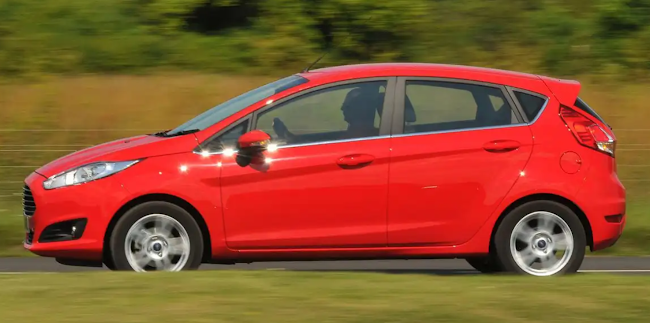Tips On How To Trade In A Car
The do's and don'ts of the trade-in process
You're getting ready to buy a new or used car. The car you currently drive is in good shape and might have some value to it. Should you sell it yourself or trade it in?
If you want the most possible money for your vehicle, you're better off selling it yourself. Potential buyers are not as well trained in car valuation as the pros, and they're not always trying to eke out every bit of a car's value for resale, so you'll likely get more money. However, this process takes time, and you'll have to deal with strangers and perhaps put in more effort than many people are willing to invest. In fact, some 45% of all car purchases in 2019 included a trade-in, according to Edmunds data.
Trade-in offers are typically less than you'd get in a private-party sale because the dealership must factor in the cost to recondition the vehicle and make a profit when it resells it. The plus for car shoppers is that trading in your car can be very convenient, far more so than finding a private-party buyer. If you follow these tips, you can get the most for your car trade-in.
1: Get Your Car's Estimated Trade-In Value
To determine if you're being offered a reasonable price on your trade-in car, you first must know what your car is worth. (People sometimes call up the car's "Kelley Blue Book" value.) We suggest you use a car appraisal tool and follow the steps to enter your vehicle's details. It is important to accurately take stock of all the car's options and be honest about the condition. Note that only a small percentage of cars are actually in "outstanding" condition. Most vehicles that are well maintained are considered in "clean" condition. When in doubt about the condition level, it's best to err on the side of caution.
The valuation estimate is what you can roughly expect a used car dealership in Glenada to offer you. Email this figure to yourself to have it on hand when you visit car dealers.
2: Have Your Vehicle Appraised
Your goal now is to get an actual offer. We recommend getting an instant offer from a dealer or car buyer like WeBuyCars. Use this offer as a baseline for your negotiating, or if you're comfortable with the offer, you can take it to a participating dealership and skip the remaining steps below.
If you still owe money on the loan, and the vehicle's appraised value isn't enough to pay it off, this means you are "upside down" and you'll have to pay the difference out of pocket. If you're not prepared to pay the difference on your car loan, trading the vehicle in at a dealership might be a better option. Keep in mind, however, that if you roll that balance into a new loan, you'll begin a negative equity cycle that is hard to break out of.
An alternative method is to call the used-car manager at your local dealership in Oakdene to set up an appointment for an appraisal on your vehicle. Timing is critical here. Most dealerships will only have one person appraising potential trade-ins. If you show up on a Saturday afternoon, you could be waiting for a while. Try to schedule the appraisal for a weekday morning when it's less hectic. There are some dealerships that offer a "blind trade" option. This is when the dealership sends you an appraisal offer via email without the need to see the vehicle. You would send the dealership your vehicle identification number along with photos of the exterior, interior and odometer readings. The dealership would assess the photos and come up with an offer.
Keep in mind that the trade-in price you're offered at the dealership can vary depending on a number of factors including the car's condition, the dealer's current inventory, and the likelihood the car will sell. There may also be special promotions around trade-ins. More about that later.
If you have a vehicle valuation estimate, you will already have a reference point to compare the dealer's offer. If not, you might want to try to get appraisals from two dealers.
Here's a good strategy you could try: Take your car to a dealer other than one that sells your car's brand. For example, take your Toyota Camry to a Chevrolet dealer. This way, your car won't be competing with six other Camrys on the lot. A non-Toyota dealer, which is very likely to sell used cars of other brands, might offer you more for the Camry than the Toyota dealer would.
3: Negotiate or Close the Deal
Once you have appraisals, you have a couple of options. You can either take one of the offers you have or negotiate for a better price. If the WeBuyCars offer is the highest, sell it there. If you have your paperwork in order, you could be done in 30 to 40 minutes. But if you are upside down on the car and need to fold the loan balance into your next car's financing, the dealership is the best place to do so.
If you're deciding between two dealerships with similar offers, you might want to lean toward the one at which you intend to buy your car. This tactic gives you some leverage since you're giving the dealership business on both the trade-in and the car purchase.
The first trade-in offer at a dealership is often on the low end, so there's room to negotiate. Say something like this: "I intend on buying a car from you today, so if you can improve on the trade-in price, I'd love to give you my business."
Another strategy is to use the appraisal as a guide. Say something like this: "I've done some research on this car and it looks like the trade-in value is slightly higher than your offer. I realize it's average, but can you beat this price?"
Sometimes this strategy will work. Sometimes it won't. But if you've solicited more than one offer, you should have some options. If you keep getting the same offers for your vehicle and none of them is what you had in mind, you may have to temper your expectations. These offers might very well be the market value of the car no matter what you think it should be worth.
At this point, you can either take what you're being offered or try to sell the car yourself. Some people may even choose to keep the car as a daily driver rather than pile miles on a new car.
You might be able to make the timing work to your advantage. Target the end of the month when the dealer may be more willing to give you an attractive offer. You also can look for special promotions, such as when a dealership offers extra cash as part of a trade-in event that's meant to beef up the inventory of used cars for sale in Bassonia.
When you're car shopping, keep negotiations for the new car and your trade-in separate. The trade-in amount should be written in the contract as a credit against the purchase price of the car. In some states, you only pay sales tax on the difference between the new car and the trade-in. This means that on top of what you receive for your trade-in, you are paying fewer sales taxes on your new car. This tax advantage is a net saving for you and could make you decide that a trade-in is worth it.
4. Common Trade-In Mistakes
There are some common mistakes that people make when they're trading in a car. Here are some and how to avoid them:
Repairing the car: People sometimes try to fix dents on their cars or throw on a new set of tires, thinking it will significantly add to the value of their trade-in. This seldom works. The dealer can usually fix flaws and put on new tires for substantially less than you can.
Overestimating the value: People tend to get sentimentally attached to their cars and often think they're worth more than they actually are. They look for the highest car value on an appraisal site for their vehicle and treat it as though it's set in stone. But appraisals are averages, meaning some dealers offer people less and others more. Rather than arguing over the car's value, your efforts might be better spent on negotiating the price of your new car.
Hiding information: Some shoppers fib, claiming to have a high trade-in offer in the hopes the dealer might try to beat it. This tactic rarely works in car deals. An experienced appraiser will either see right through the inflated offer or call the bluff by asking to see the estimate in writing. If your offer is for real, display it proudly. Also, some shoppers wait until the last minute to mention that they have a trade-in as part of the car-buying deal. This is one of the top car buying myths. It's best to be upfront about the trade-in from the beginning.
If you follow these steps and sidestep the common pitfalls, the trade-in process will run smoothly. The key is to know what your car is worth, shop around, and be realistic about the offers you get.
.
.
.
Info amended from https://www.edmunds.com/


Comments
Post a Comment